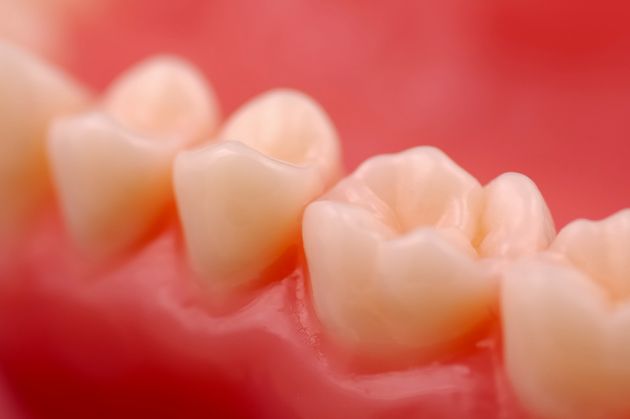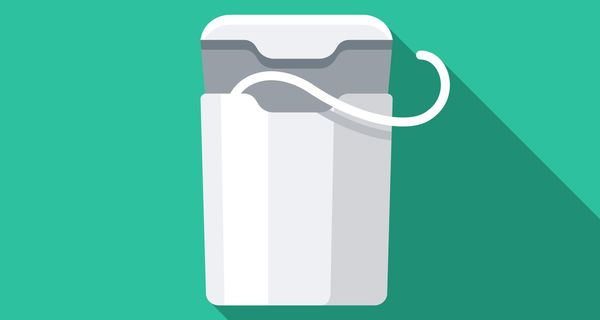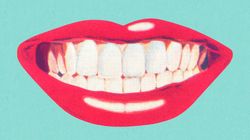
We’re here to guide you through the coronavirus pandemic. Sign up to the Life newsletter for daily tips, advice, how-tos and escapism.
Bleeding gums. Swollen gums. Bad breath. These are all signs of gum disease which, if left untreated, could lead to tooth loss and gum abscesses.
It’s thought 90% of adults in the UK have some form of gum disease. It can vary in stages – from the more mild gingivitis to severe, fully-blown gum disease.
Dr Reena Wadia, a periodontist and founder of RW Perio, tells HuffPost UK the issue is “common and often missed”. Aside from the obvious issues it causes like tooth loss and bleeding gums, severe gum disease has also been linked to health complications including cancer, dementia and heart disease.
Here’s what you need to know about it.
What causes gum disease?
Gum disease, also called periodontitis, is caused by bacterial infection that damages the soft tissue and bone that support the teeth.
It can be caused by a range of factors. Poor oral hygiene – not cleaning your teeth properly or regularly – is a common cause, as well as: smoking, old age, diabetes, pregnancy, a weakened immune system, malnutrition, taking certain medications that lessen the flow of saliva (such as antidepressants and antihistamines), stress, and genetics.
What are the signs of gum disease?
Healthy gums usually look firm and pink, although they may contain other pigments depending on your ethnic origin, Anna Middleton, founder of London Hygienist, tells HuffPost UK.
There are some key telltale signs of gym disease. These include bleeding gums following brushing, flossing or eating, which Dr Wadia says is a “natural alarm bell signifying disease”, as well as changes in the appearance of your gums (they might become red, swollen or start receding) and persistent bad breath or a bad taste in the mouth.
“Just like you wouldn’t ignore bleeding from any other part of your body, don’t ignore bleeding gums,” she says.
In worst case scenarios, gum disease can lead to gum boils or abscesses – “these are painful and can cause your face to swell up,” she says – as well as wobbly teeth, tooth loss, or your teeth changing position and drifting.
What health issues has gum disease been linked to?
Gum disease has been associated with an increased risk for a number of health conditions, including: cardiovascular disease, arthritis, lung infections, premature labour, and having a baby with a low birth weight.
Multiple studies have linked severe gum disease with different types of cancer. In one study, a history of gum disease was associated with a 43% and 52% increased risk of oesophageal cancer and gastric cancer respectively. Another study found people with severe gum disease had a higher risk of developing lung and colorectal cancer compared to those with mild or no gum disease.
A more recent study in July 2020 linked gum disease with dementia in later life. Published in the medical journal of the American Academy of Neurology, it followed 8,275 people with an average age of 63 over a 20-year period.
“People with the most severe gum disease at the start of our study had about twice the risk for mild cognitive impairment or dementia by the end,” said lead author Ryan Demmer, from the University of Minnesota School of Public Health.
“However, the good news was that people with minimal tooth loss and mild gum disease were no more likely to develop thinking problems or dementia than people with no dental problems.”
Good dental hygiene is the best way to keep healthy teeth and gums throughout your lifetime, said Demmer, who noted that more research is needed to understand if treatment for gum disease can prevent dementia. It’s also worth noting that while people with gum disease may have an increased risk of these problems, there’s no clear evidence that gum disease directly causes them.
How to prevent gum disease
Dr Wadia says the best ways to look after your gums include effective home care – that means brushing twice a day – as well as regular professional checks and cleans. She recommends an electric toothbrush, if possible. “You need to be holding your toothbrush along the gum line, not just on the teeth,” she says.
Middleton advises placing the toothbrush bristles against the teeth at a 45-degree angle towards the gum line. “Many of us forget to brush our gums when we brush our teeth, but brushing your gums is integral because this is where plaque will sit,” she says.
“When brushing, hold the handle gently with a light grip and only apply light pressure. Glide the brush across your teeth and gums gently, allowing your brush to do must of the work – do not scrub.”
Cleaning between your teeth with interdental brushes or floss is just as important as cleaning. Brushing only cleans about 60% of our teeth.
“Toothbrushes are not capable of reaching in-between teeth to remove unwanted debris,” says Middleton. “However, interdental cleaning with floss or brushes helps prevent tooth decay and gum disease, which can occur when food and plaque are left lodged between teeth.
“If you have the space between your teeth, opt for interdental brushes and always use the biggest size possible – you may need more than one brush size. If your teeth are tight together then dental floss is recommended.”
Tips for flossing:
- Take a piece as long as from your elbow to tip on index finger, wind the floss around your middle fingers leaving an inch or two to work with.
- Hold the floss tight between your thumbs and index fingers. Using a gentle sawing action slide the floss between the teeth.
- Go all the way below the gum line and gently curve the floss in a tight ‘C’ shape and rub up and down. Repeat this for the other side of the tooth before coming back up and out to move on to the next space.
- Use a clean section of floss as you move between teeth. If you get the floss in but cannot get it back out – do not panic. Gently unravel from fingers and pull the floss through.
- Do your interdental cleaning before you brush your teeth to remove debris and make this a daily practice.
Tips for using an interdental brush:
- Choose the right size.
- Insert between the teeth gently and move the brush back and forth a few times.
- Change the size and curve of the brush if needed. Some people find it easier to keep it straight for the front teeth but angle/bend for the back teeth.
- Change the brush when filaments have become worn – usually 4-7 days.





